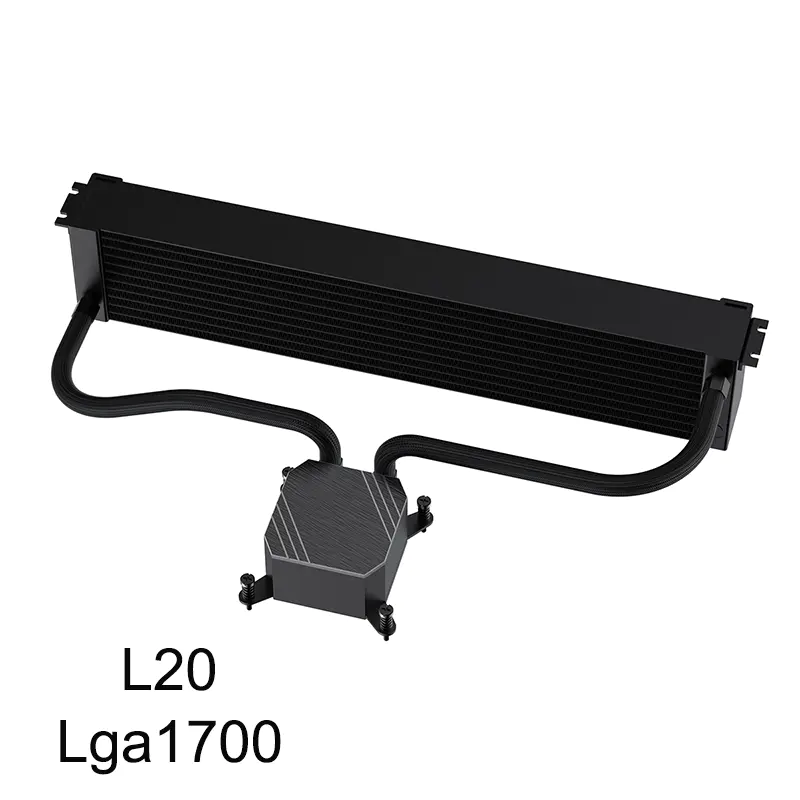BETTER TOUCH BETTER BUSINESS
Contact Sales at Lori.
Water-cooled servers are an innovative cooling system that uses water as a coolant to effectively absorb and dissipate the heat generated during server operation. Compared to traditional air-cooled methods, water-cooled servers not only offer higher heat dissipation efficiency but also significantly reduce noise, making them an energy-efficient and environmentally friendly choice.
Working principle of water-cooled servers: The operation of water-cooled servers is primarily based on two core steps: heat absorption and heat dissipation. When the server operates, the CPU and other electronic components generate a large amount of heat, causing the server temperature to rise. At this point, the water cooling system introduces cooling water into the server internals through water cooling devices (such as water blocks or cold plates), directly contacting the heat sources. The cooling water rapidly absorbs heat, causing its own temperature to rise. Subsequently, the heated cooling water is transferred via pipes to heat dissipation devices (such as cooling towers or heat sinks), where it exchanges heat with the ambient air. During this heat exchange process, the temperature of the cooling water decreases, transferring heat to the air and releasing it outdoors. This completes a full cycle from heat absorption to heat dissipation by the cooling water.
Steps of operation for water-cooled servers: Configuration of cooling water system: Water-cooled servers employ a closed-loop cooling water system comprising components like water pumps, cold plates, and water blocks. Contact of heat sinks with heat sources: The heat sinks of water-cooled servers are made from highly conductive metals such as copper or aluminum. They closely contact the heat-generating components of the server (such as CPUs, GPUs), ensuring efficient heat conduction. Flow circulation of coolant: A water pump extracts coolant from the reservoir into the water block, where the coolant flows through channels of the cold plate for heat dissipation. During circulation, the coolant fully contacts the heat sinks, absorbing their heat. Heat dissipation and cooling: The coolant, now carrying heat, returns through pipes to the water block and re-enters circulation via the pump. Throughout this process, the coolant passes through heat dissipation equipment, releasing heat to the outdoor air, thereby achieving cooling.
Workflow of water-cooled servers: Supply of coolant: Water-cooled equipment on servers includes components such as water pumps, coolers, and pipes. The water pump extracts coolant from a reservoir or cooling device and transports it into the server internals via pipes. Coolant entering servers: Filtered coolant enters the server internals and closely contacts the heat sink or radiator, absorbing the heat generated during server operation. Heat transfer and cooling: While absorbing heat, the coolant also contacts heat sources such as heat sinks or directly interacts with server chips to remove heat. Subsequently, the coolant carries absorbed heat into the water cooler, where it is cooled again by cooling fans or other cooling devices. Coolant return and circulation: Cooled coolant is transported back to the pump or reservoir through pipes to complete a cycle. The coolant is then pumped back into the server internals to continue absorbing and dissipating heat, maintaining an ongoing cooling process.
In summary, water-cooled servers effectively dissipate heat by circulating coolant, transferring heat from server components to the coolant, and cooling it in a water cooler before recirculating. This cooling method provides higher efficiency compared to traditional air-cooled servers, keeping server operating temperatures lower to enhance performance and reliability. Moreover, water-cooled servers operate more quietly, reducing their impact on indoor environments.

Copyright © 2025 Shenzhen Lori Technology Co.,Ltd. | All Rights Reserved